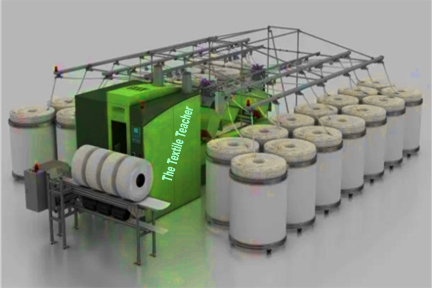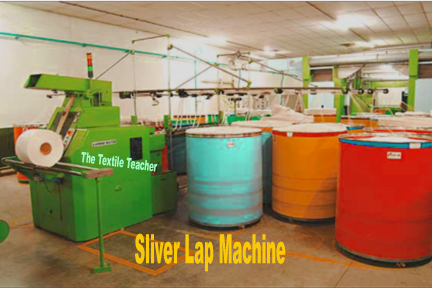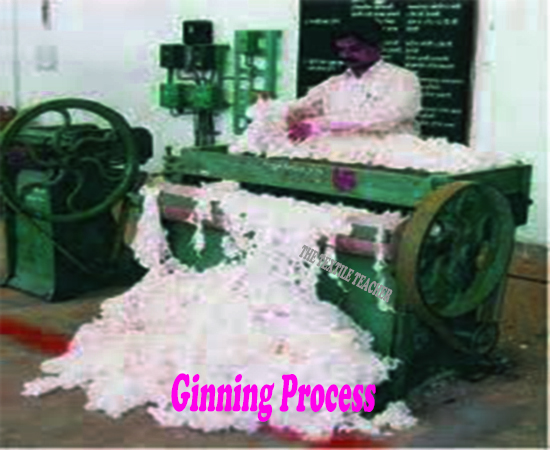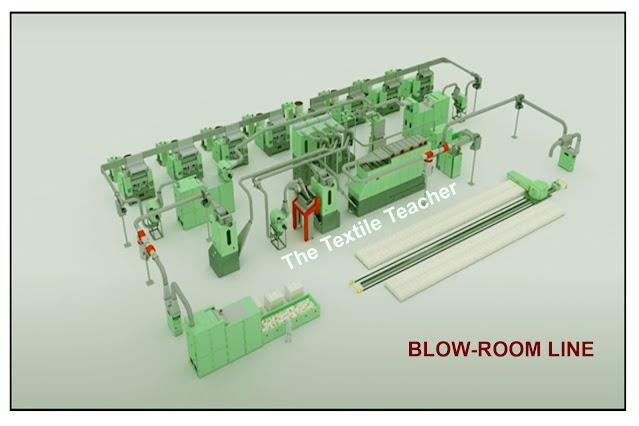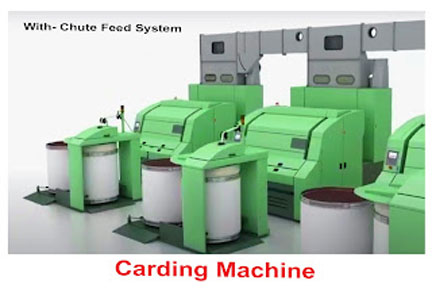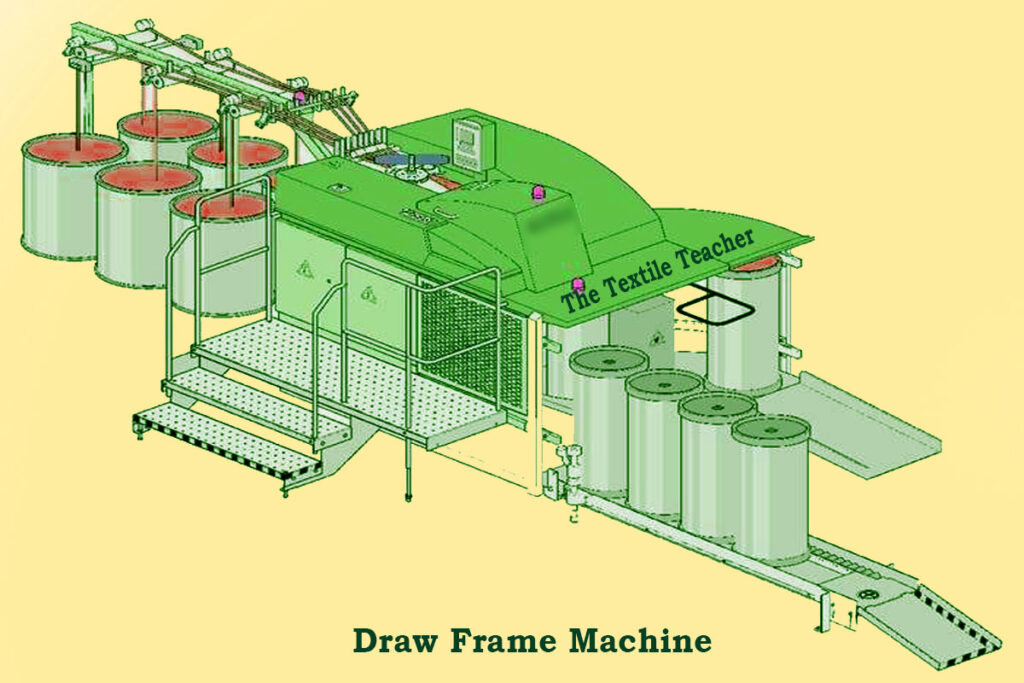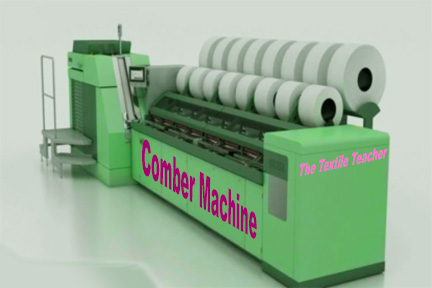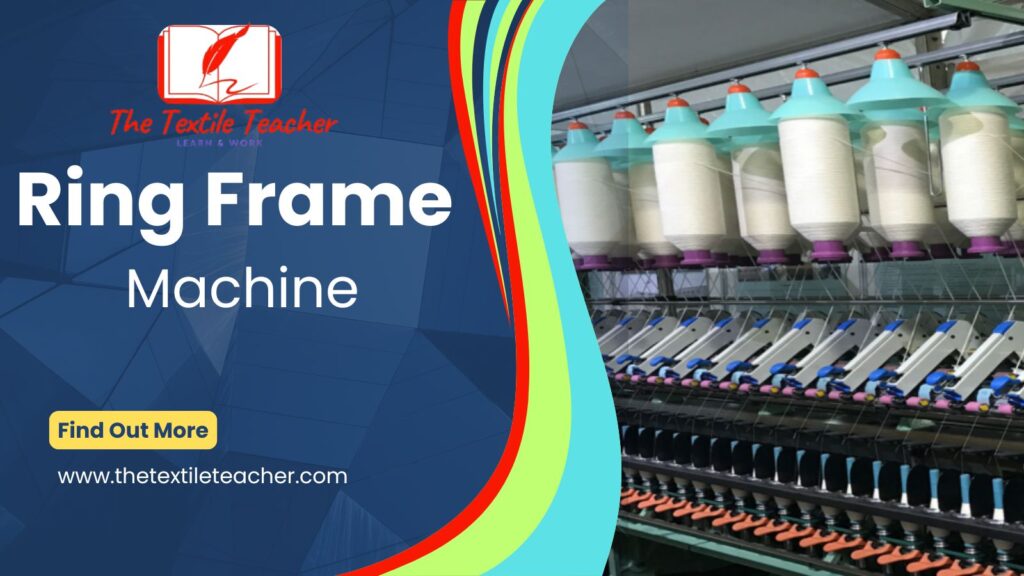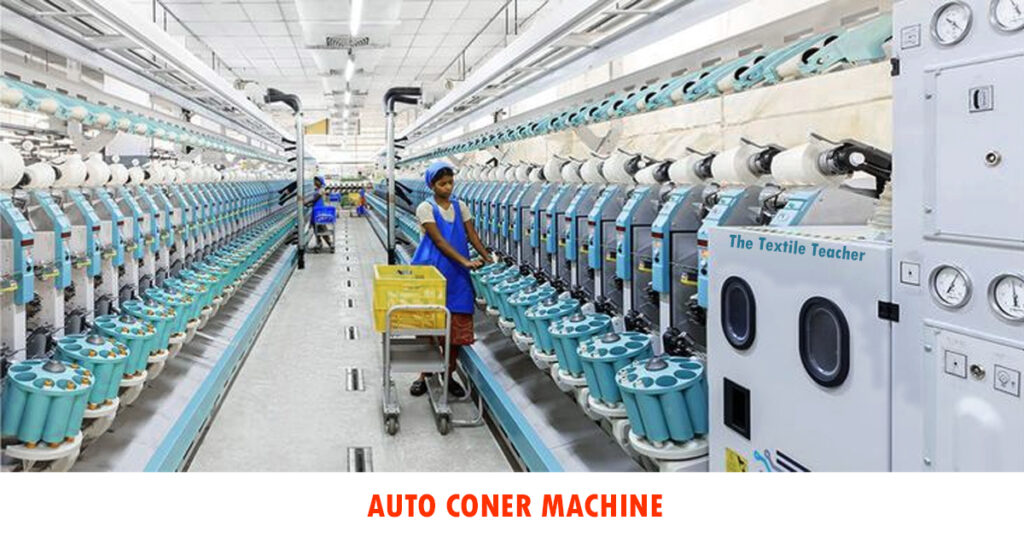Lap Former Machine:
To produce better quality of cotton yarn means combed yarn, we required two more extra machines in our spinning section comparing to conventional carded yarn production process. Lap former are to produce regular laps, after that comber machine to transfer those laps into uniform slivers.
The Lap former machine forms the lap by sliver doubling (16 to 32 slivers) The slivers are fed to the lap former machine in side by side passing through the guide rollers and stop motion. To produce a compact lap enters the drafting zone and then calendaring zone. Then lap is wound on to the bobbin.
Lap former machine is a important machine for produce lap in spinning line. The Lap former machine is used for the production of lap. It is used after completing the process of blow room, carding or draw frame.
Types of Lap Former Machine:
A. Sliver Lap Former
B. Ribbon Lap Former
A. Sliver Lap Former:
The sliver lap machine is to produce a lap from several carded slivers. The use 18 to 24 slivers depends on the width and mass per unit length of the lap are required. The sliver lap sheet runs through the two pairs of calendar roller which helps to compact it into a sheet.
B. Ribbon Lap Machine:
The ribbon lap machine is used for doubling of lap which is produce in sliver lap machine. The machine is made lap from 6 to 8 sliver lap depends on the width and mass per unit length of the lap are required.
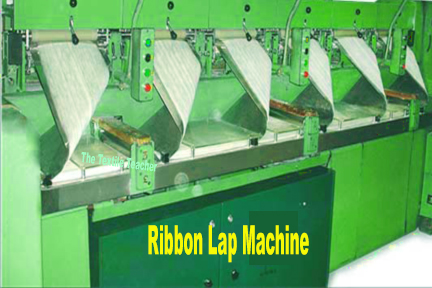
Objectives of Lap Forming Machine:
I) To doubling of Draw frame or card slivers.
II) To impart optimum draft to the feed material.
III) To calendaring of the material to form lap.
IV) To winding of the lap on Spools.
V) To doffed the fully wound Lap.
Features of Automatic Lap Former Machine:
1. Automatic doffing of fully wound laps.
2. Automatic stop motion works at sliver breakage and at the time doffing.
3. Auto grain adjuster.
4. Automatic leveling.
5. Automatic lap carry device.
6. Indications of lights for faults may occur in machine.
7. Automatic Lap length measuring device.
The Lap forming is the important process before combing operation, which affects the quality of the comber sliver. The needs of the lap for the better performance of combing are great fiber orientation, and uniform thickness. The comber machines are fed with lap manufactured by doubling of slivers and webs.
The laps are prepared with proper doubling and draft may enhance the uniformity of the output sliver. The lap sheet produces a highly uniform combed sliver with a high degree of evenness. Great fiber orientation is a prerequisite in the feed lap along the length of the feed lap to achieve better sliver quality. Lap can be produced by different process as shows in Fig.
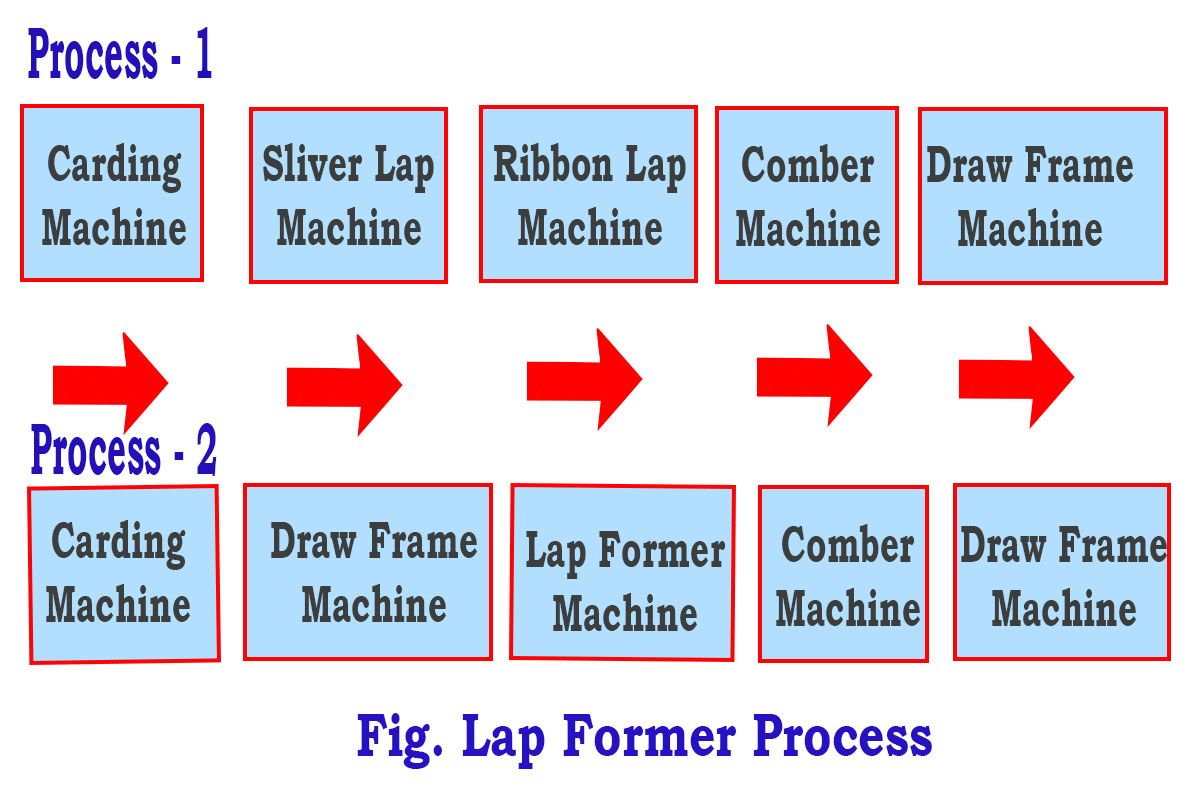
The Sliver lap former and ribbon lap former is used to produce the lap by doubling certain no. of slivers and webs, respectively. The other process has sliver doubling machine is called super lap former M/C, used for lap preparation. Process-2 is the modern lap formation process. Process-1 is also still in use in many spinning units. In the Process -1, the range of 16-32 carding sliver cans is doubling and drafted in the sliver lap former and the delivered lap sheet is wound onto the spool, which is known as “Sliver Lap.”
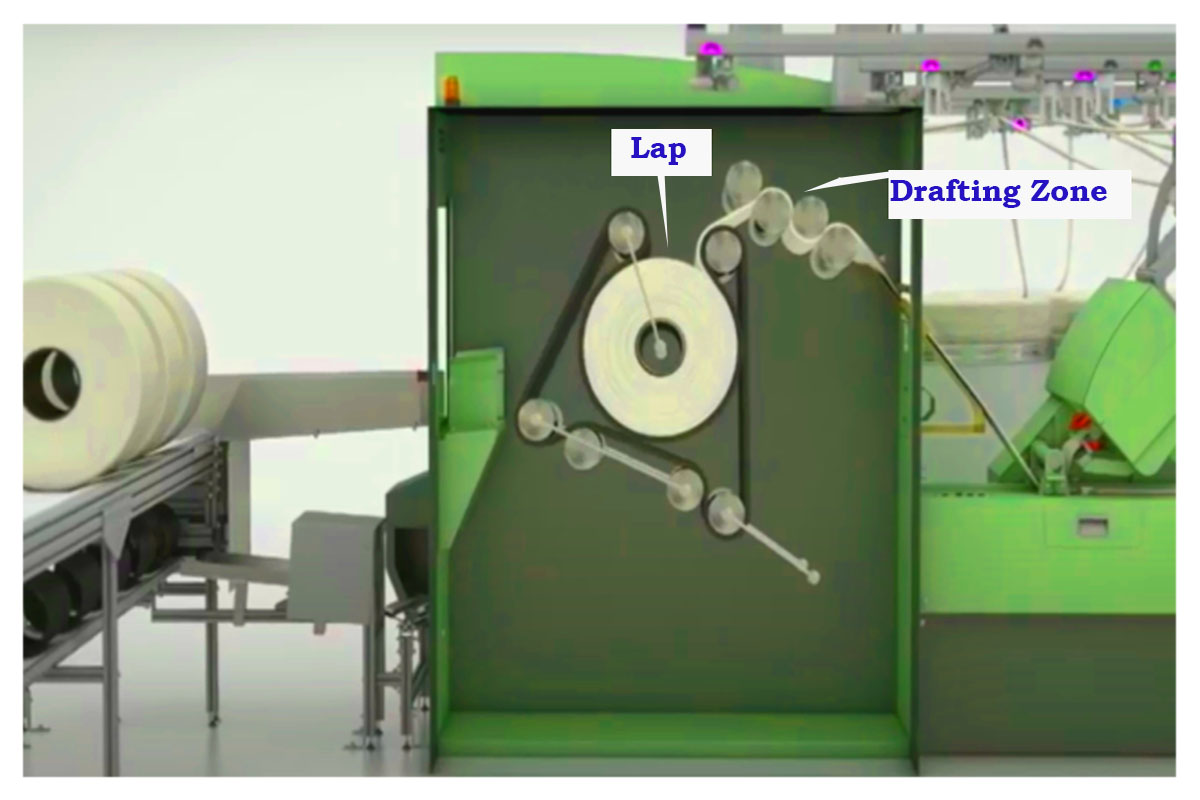
Fig. – Lap Preparation and Drafting Zone
Operations of Lap former Machine (Zones):
Creel Zone:
The creel zone also known as feeding zone. 16-32 Draw Frame slivers is passes through guide roller, guide bars & fed to drafting zone.
Guide Roller:
It guides to the feeding slivers and work as a stop motion when feed sliver break.
Calendar rollers & Lap formation:
By means of rollers and stop motion, the slivers are fed side by side. Then the slivers enter in drafting zone and then calendaring zone to produce a compact lap. Then the lap is wound on to cylindrical Spool. In the lap former, the material passes through a light/slight draft.
Doffing of Lap:
The Lap former machine doffs the full lap automatically, when the desired length of lap is wound on to the spool. And during doffing the empty spools are taken from the reserve holder by the machine and the next round of winding begins.
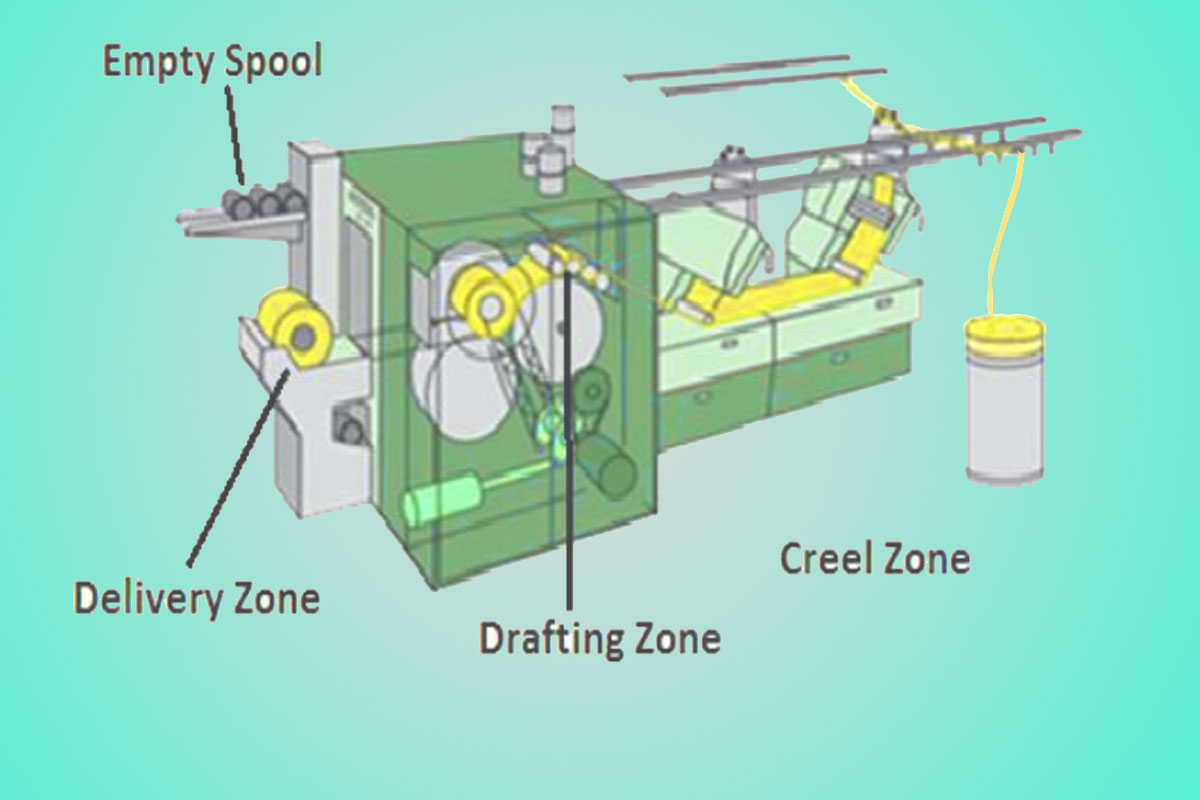
Fig. – Different Zones of Lap Former Machine

